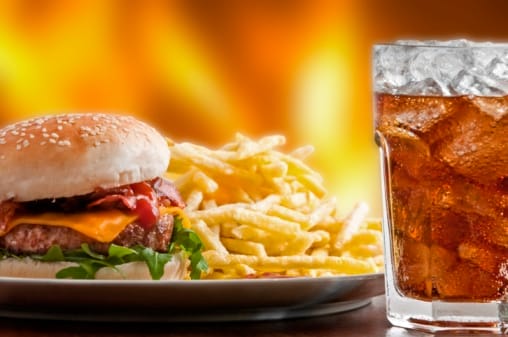Between a fast-food quarter-pounder and a pint of the first luscious cherries of the season, which would you consider a delicacy? You may not care for cherries that much, but I think most of you will stutter before calling a quarter-pounder a “delicacy.” Most of us would label the cherries as awfully expensive at $4 a pint, while we might order a similarly priced hamburger without a thought.
A similar dilemma unfolds every March and April in India, when the king of fruit, the Indian Alphonso Mangoes, appears on shelves. In India, they are more than a delicacy; they are revered as a holy tree in Hindu rituals. No other fruit enjoys such exalted status. Special roadside stalls are put up to sell nothing but mangoes.
Yet everyone laments the initial “astronomical” prices of mangoes. At about INR 100 ($1.80) this year, though, a premium mango costs as much as a chicken burger (with cheese) and half as much as a personal pizza.
Why do people select the fast food over the fruit? I have many theories:
1. Too-New-To-Crib: Burgers and pizzas are a recent introduction to India and enjoy a novelty advantage. But then how would you explain Americans complaining about the prices of cherries?
2. Headless-Chicken: Maybe when prices are dictated by big and powerful fast-food brands, we behave like headless chickens before their menus.
3. Relative-Price-Inflation: In the last 30 years, mango prices have increased 50 times. Maybe our brains perceive price over history.
4. Bananas-to-Mangos: It could be wrong to compare mangos and burgers. Maybe we perceive expensiveness of something only with respect to its ilk. After all, a banana is sold for INR 2-3.
5. Expected-Intra-Season-Deflation: Mango prices invariably drop toward the end of the season, as they did this year—by more than 150 percent.

Or will you buy one of these (and complain about the price)?
6. Tummy-Full: Maybe nobody eats just a burger. Everyone eats a combo, which fills you up for a marginal price increase.
7. Forget-the-Farmer: Do we understand big-company overheads and rationalize their prices, but not that of produce and producers?
8. High-Price-Justification: Probably we all understand and accept that delicacy has to be priced high. By crying about the expense, we actually emphasize that mangoes are indeed a delicacy.
9. Status-Symbol: By complaining about price while devouring them, we fell two mangoes with one stone: declare our capacity to afford them and show false empathy to those who cannot.
I can go on and on, like a good conspiracy theorist, but the truth is I seriously don’t know the answer. If any behavioral economists do know, please let me know. Not that it’s going to matter much. When next year’s mangoes arrive, I will be in the streets waving flags of thousand-rupee notes. Until then, I only hope I don’t blow away all my cash eating expensive nondelicacies at fast-food outlets.

























